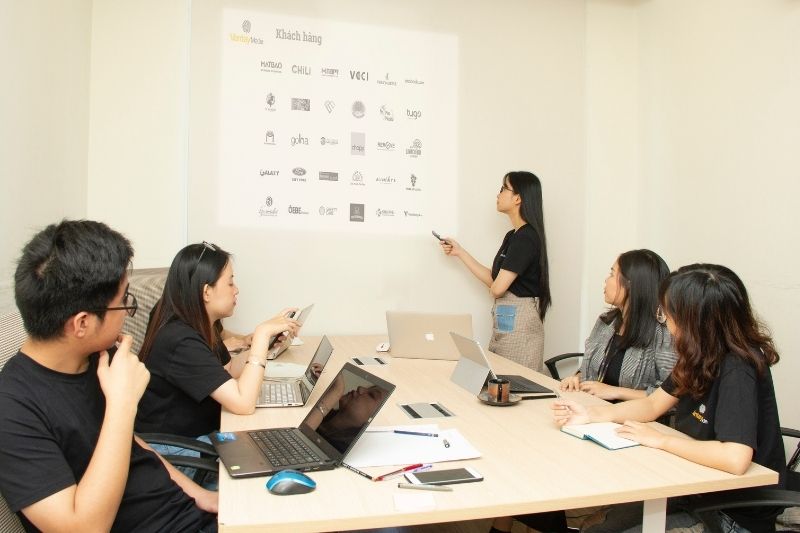Workplace diversity and inclusion is a hot topic these days – and can help you drastically increase your employee engagement and productivity. Here’s how you can get started.
Last week, the Hive Life team sat in on a panel at ReThink 2020, Hong Kong’s biggest sustainability conference, to learn more about the value and importance of workplace diversity.
Here, we break down the 5 key insights from Denman Chan, Head of Sales at Proctor and Gamble, Rachael Shek, a partner at Eversheds Sutherland, and Olivia Wong, the Group Head of Diversity & Inclusion at Swire.
Read on to find out the changes that could drastically improve D&I in your workplace. After all, an office is only at its most efficient and effective when everyone there feels valued.

1. Evaluate How Diverse and Inclusive Your Organisation Currently Is
Change can’t happen without first understanding where changes need to be made. Evaluating how inclusive your organisation currently is should be the first step when trying to improve your firm’s workplace diversity. You can often find hints as to whether your employees find the workplace inclusive.
Rachael Shek, a partner at multinational law practice Eversheds Sutherlands, said that nobody in her 80-employee office had come out four years ago. “It’s a personal decision, but it also suggests that it might not be a safe space to talk about [these issues],” she explained. She encourages businesses to evaluate how diverse and inclusive they are by asking all sorts of questions of themselves, such as: “Does the company have inclusion training programmes for employees?” “Does the company offer health insurance to same-sex spouses?”
Once your organisation has identified areas of improvement in terms of D&I, then significant change can begin to happen, as you will be better equipped to allocate time and resources to the relevant areas.
2. Come Up With a Defined Plan
Once a baseline has been established as to how diverse and inclusive you believe your organisation currently is, you can begin to come up with a defined plan that will outline your next steps into achieving a more inclusive workplace. Create both short-term and long-term goals for your company with realistic deadlines, such as convincing upper management that D&I is worth caring about (short-term) or establishing inclusion and diversity training programmes for your employees (long-term).
Olivia Wong, Group Head of Diversity and Inclusion at John Swire & Sons, emphasised that it was important not to get bogged down on a specific aspect of diversity, and to instead focus on harmonising all the different groups. “At the end of the day, diversity isn’t just about gender equality, LGBT people, or people with disabilities. You have to understand your market while respecting what is important to all of them.”
In short, set achievable goals, and hold you and your team accountable for the decisions that are made during the process. The most important thing is ensuring that everyone feels as though they have a voice.

3. Set Quotas or Targets
Setting quotas are a more defined way of improving your firm’s workplace D&I. Some look down on quotas, feeling as though certain quotas reward people who may potentially be undeserving or underqualified for the positions that they receive. But Olivia feels as though this negative view takes away from the true purpose for the institution of quotas: to ensure fair representation. “Whether you’re a businessman, in sales, or a partner in a law firm, you have revenue targets and virtual targets to meet. How are quotas any different from these targets that we set when we’re just trying to ensure fair representation in various levels?”
Referring to quotas as targets instead can help remove some of the negative stigma behind the word “quota”, but the most important takeaway here is that the company is actively working towards better D&I standards because they feel it is important, and not because it is simply an arbitrary number that they need to meet. “Call it whatever you want,” Olivia argued. “It’s just about holding people accountable to make sure that we have fair representation.”
4. Establish a Culture of Diversity and Inclusion
Establishing a culture of D&I in a company can only happen if both the upper and lower levels of the organisation are onboard. Management needs to be able to come up with tangible solutions that their employees can buy into. Often, employees want to do more than just talk about these issues; they want to see and feel physical support from upper management.
Denman Chan, Regional Equality and Inclusion Lead at Procter and Gamble, suggested diversifying inclusion and diversity resources that your company utilises, in order to have a tangible solution for any specific market. “You need to connect your resources internally and externally. I find resources in commercial businesses, the LGBT plus index, LGBT organisations, and I also collect resources from other markets in Europe and across Asia.”
Doing this ensures that you have a large database of inclusion data and materials to work with. Once everyone at the company is onboard with establishing a culture of D&I, you can connect them with a wide variety of resources to accelerate the process and see real change quickly.

5. Avoid the Labelling Effect
In sociology, the labelling effect refers to the hypothesis that self-identity and the behaviour of people might be influenced, if not determined by the terms used to classify them. You should look to avoid the labelling effect in your organisation, as it could potentially further ostracise those who already feel unwelcome. Instead, seek to build an effective ally system that makes people feel valued and appreciated.
Denman explained that LGBT people in your organisation shouldn’t feel as though they’re required to come out, but they should feel that if they did, they’d be supported by their fellow peers, and wouldn’t be treated differently. “If you see employees labelling certain people, you have to question that. It’s about creating a safe environment for people to come out, or for people to just feel comfortable being themselves at work.”
Obviously, boundaries differ between workplaces and cultures, but as long as you remember to be respectful and supportive, you’re already well on your way to improving your organisation’s D&I.
Wrapping Up
Despite all that we’ve said about establishing quotas or training programmes, D&I is about so much more. Employers that value high levels of D&I in their workplace can set themselves apart from competitors by demonstrating that they understand the unique needs and perspectives of their different employees. Diverse and inclusive workplaces lead to deeper trust and more commitment from employees, who will benefit from understanding that they are valued and appreciated, and will in turn bring short-term and long-term benefits to your organisation.
Related Articles
12 Reasons Why Diversity is Important in the Workplace
Employee Engagement: What it is, Why it’s Important & How to Improve It
Employee Pulse Survey: How You Can Increase Your Employee Engagement





